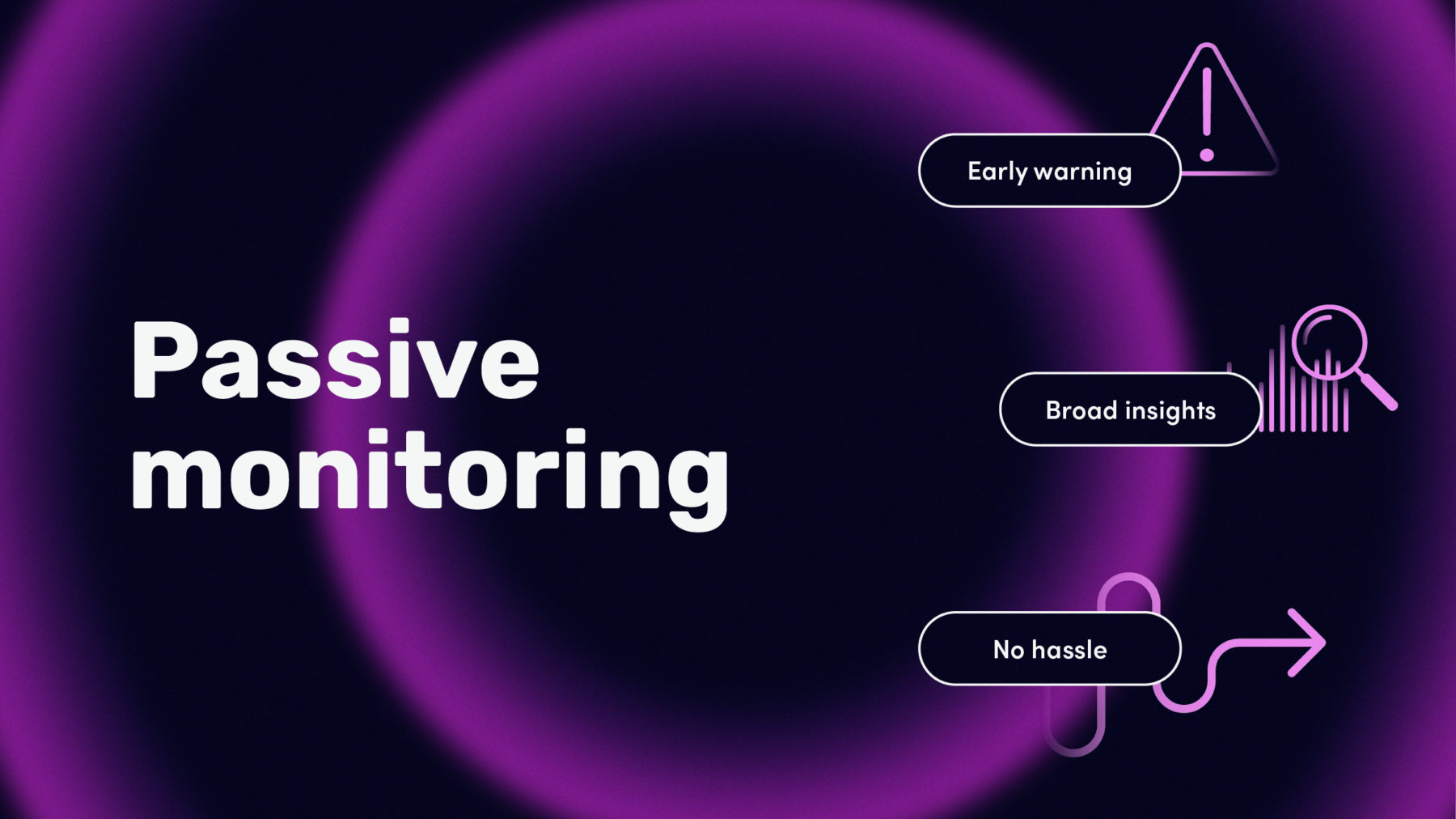Unlocking passive monitoring’s massive potential
December 07 2022

Passive monitoring is part of the “invisible infrastructure” for biosecurity we are building to run in the background of our lives. It allows us to tap into routine, population-level insights for entire facilities, neighborhoods, or cities. Population-level data could be used to establish baselines so that we can readily identify new surges, emerging variants or pathogens, or other anomalies that may inform public health intervention. The data can also feed the “weather map” for infectious disease we’re striving toward, getting us closer to a robust early warning system.
We’ve been excited about these technologies for a long while; we’ve previously worked with Biobot Analytics to conduct viral sequencing on more than 2,000 wastewater samples across all 50 states as part of a federal program, and earlier this year, we ran our very first air monitoring pilot at our own headquarters in Boston. Passive monitoring technologies hold incredible potential—but realizing that potential at a large scale requires optimizing our end-to-end program design to fit a variety of contexts and meet the needs of diverse communities.
We’re incredibly grateful to be working with several communities across the U.S. to carry out a series of passive monitoring pilot programs. Examining unique facets of passive monitoring in these real world settings unearths challenges and spurs innovation.
Combining modalities for multi-layered protection
Human immune systems have evolved to build sophisticated multi-layered defenses that coordinate to prevent, detect, and respond to infectious diseases. We envision a global immune system that does the same for the world, but we’ll need creative infrastructure to bring it to life. We need rigorous analysis to help design effective, layered approaches to population-scale pathogen monitoring.
Ann Rubin, KTVU FOX 2, reports on this cutting edge approach to COVID testing in Menlo Park.
In California’s Menlo Park City School District, we worked with Stanford University and Dysert Environmental April through June to implement wastewater and air monitoring alongside ongoing pooled testing. Being able to compare data from routine testing, wastewater monitoring, and air monitoring is especially valuable to help understand how these different methods can complement each other within a comprehensive public health strategy. The district was already operating a robust testing program during the 2021-2022 school year, and was eager to work with us to advance innovation on how to leverage layered public health insights.
Balancing how active and passive tools work together in the real world can unlock flexible and scalable testing combinations. With the ability to mix and match services, communities can find solutions that are well-suited to their needs.
Making wastewater testing accessible to rural areas
Wastewater monitoring gets plenty of news coverage. But many of the headline-grabbing stories focus on areas that have municipal wastewater supplies to sample from. What about those that don’t?
We’re working with a K-12 partner to determine if sampling from schools can act as a stand-in for population-level sampling from rural settings without centralized wastewater facilities. We got our start in schools as key nodes for biosecurity, and we’re hopeful that they can now help close wastewater surveillance gaps in rural areas and promote health equity.
Schools can be sizable proxies for regions, supplying enough data to provide valuable insight for broader communities. We hope to see how consistently testing in a K-12 setting can provide public health officials with data to track risks for the local population, in and outside of school.
Exploring the promise of targeted insights for elderly populations

The pandemic has been especially tough on vulnerable populations, like the elderly. Many senior living communities saw extended lockdowns, restricting outside visits and community activities to prevent outbreaks. At New Horizons at Marlborough, an independent and assisted living community in Massachusetts, we’ve partnered with LuminUltra Technologies, Inc., to launch an innovative wastewater monitoring pilot. The pilot is exploring sampling protocols and how we gather insights and develop reporting methods to help optimize the utility of facility-level data in senior living facilities.
A wastewater-based early warning system at the level of a single facility could enable targeted and timely public health responses that minimize disruption to residents’ lives. Precaution will always be the name of the game in congregate senior living—but we want to help seniors thrive by building their confidence to see family, engage with friends, or indulge in hobbies. With the potential to spot asymptomatic instances of viruses such as SARS-CoV-2, senior living centers could be better equipped to nip emerging outbreaks in the bud.
Expanding the breadth of air monitoring campaigns
Our journey into air monitoring began at our headquarters in Boston. The internal pilot tested different solutions with a focus on how we could optimize program design for our partners. Doing our own experiment was fun and informative, but learning is always better together. We’re tremendously thankful for the chance to work with four schools in the Manchester Public School District to accelerate our learning potential.
We’re once again layering passive air monitoring with ongoing active testing to help uncover the value-added insights from air monitoring and assess its potential as a sustainable, accessible solution. We can’t wait to see what we’ll learn—pilot-scale evaluations are a critical step on the pathway to potential large-scale deployment.
Using ports of entry to track global patterns of viral spread and evolution

The pilots we’ve introduced so far are focused on localized communities, but we also know that pathogens don’t recognize borders. In particular, travelers are an important population to consider. Because of their international mobility, they can contribute to turning localized outbreaks into widespread epidemics. Ports of entry are a key node for countries to understand how global risks and trends, such as emerging variants and pathogens, could affect their domestic populations. Our ongoing Traveler-based SARS-CoV-2 Genomic Surveillance program with the CDC and XpresCheck is proof-of-concept of the value of an early warning system for travel biosecurity.
The program’s scope is based on travelers providing voluntary samples. Thousands have stepped up to participate, but as we look to the future, there’s incredible potential for sustainable ways to passively gather information about emerging pathogens, without relying solely on swabbing noses. We’ve piloted wastewater sampling from aircraft lavatories to see how it could enhance our understanding of new and rare SARS-CoV-2 variants entering the U.S., and we plan to incorporate this innovative modality into the full-scale program.
Sharing the power of passive monitoring
Sampling from shared environments casts a wide net with little effect on our daily routines. It creates robust baseline data so that when anomalies appear, we can spot them quickly and make informed decisions. That power on a global scale can help empower officials to prevent, detect, and respond to biological risks.
Building a global network starts by working with communities to solve their testing challenges. If you think your community could benefit from passive monitoring, we’d love to help blaze the trail together. For information on our offerings, please reach out!